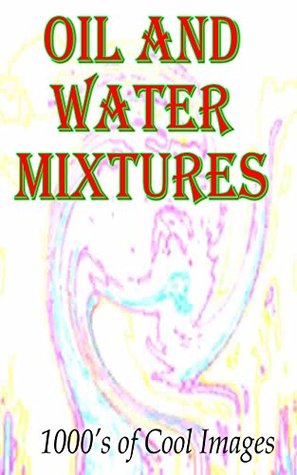Read Online Oil and Water Mixtures : 1000's of Cool Images - D.C. Gregory file in ePub
Related searches:
Oil and Water Mixtures : 1000's of Cool Images – Booksliced.com
Mix It Up with Oil and Water - Scientific American
Why Don't Oil and Water Mix? Wonderopolis
US4938876A - Method for separating oil and water emulsions
Emulsions: When Oil and Water Do Mix - IFT.org
Superhydrophobic and superoleophilic membranes for oil-water
Oil and Water - YouTube
Emulsions: making oil and water mix
Amazing Experiment With Oil and Water How to Mix Oil
Oil and Water Experiment - The Best Ideas for Kids
10 Heterogeneous and Homogeneous Mixtures
1.4H: Water, Sand, and Oil Baths - Chemistry LibreTexts
Read how aggreko helped an oil and gas facility cool the water produced when drilling the design included a heat exchanger, plus 1,000 tonnes of cooling,.
The viscosity of oil can be ten times greater than water, increasing the energy required to pump oil for cooling, and reducing the net power output of the engine. Comparing air and water, air has vastly lower heat capacity per gram and per volume (4000) and less than a tenth the conductivity, but also much lower viscosity (about 200 times lower.
24 may 2018 unlike many other substances such as fruit juice, food dyes or even sugar and salt, oils do not mix with water.
Although these methods can separate most oil-water mixtures to some extent, they usually suffer from many obvious limitations, such as low separation efficiency,.
22 feb 2021 a comprehensive review on different oil-water separation in oil-water mixture by selectively blocking the oil and water phases, respectivly [26]. Metal processing (where cooling is required [113]), mining, textile,.
An emulsion is a temporarily stable mixture of immiscible fluids, such as oil and water, achieved by finely dividing one phase into very small droplets. Common emulsions can be oil suspended in water or aqueous phase (o/w) or water suspended in oil (w/o). There also can be more complex systems, such as oil in water in oil (o/w/o).
54: a) boiling water bath, b) water bath to cool an apparatus, c) heating a flask with a sand bath, d) allowing a flask to cool. Oil baths are much like water baths, but use silicone or mineral oils in order to enable temperatures hotter than the boiling point of water ( \(100^\texto \textc\)).
Craig's homework, 21/6/14find out what happens when you mix water and cooking oil together.
These examples represent emulsions, which are stable mixtures of tiny droplets of one immiscible fluid within another, made possible by chemicals called emulsifiers. Simple emulsions are either oil suspended in an aqueous phase (o/w), or water suspended in oil (w/o).
For example, if your mix ratio is 8:1 or 8 parts water to 1 part solution, there are (8 + 1) or 9 parts. Need another example? if your mix ratio is 4:1 or 4 parts water to 1 part solution, there are (4 + 1) or 5 parts.
Add a few drops of food coloring to the water and stir until combined. Securely tighten the lid on the jar and shake it for 15-20 seconds.
These special colloids (another type of mixture) have a mixture of oils and waters. As time passes, the oil and water will separate, because emulsions are mixtures.
Have you ever heard the saying, “oil and water don't mix”? for this easy science experiment, we observe exactly.
Do try this amazing experiment at home on mixing oil and water.
Apparatus for continuously separating oil, water and solids from stable mixtures thereof, also includes the step of adding a flocculant prior to cooling the mixture� throughout capacity, developing a separation force over 1000.


Post Your Comments: